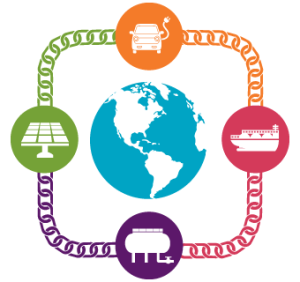In response to a petition by bankrupt U.S. solar panel manufacturer Suniva Inc., today the U.S. International Trade Commission (“ITC”) issued a finding that low-cost solar panel imports have caused “serious injury” to the domestic manufacturing sector.
It is widely believed that trade sanctions from this decision could cause price increases on the most commonly used type of solar panels, and therefore significant harm to the U.S. solar industry and corporate energy consumers. By early November, the ITC will recommend a remedy, which will go to the White House for a final decision within three months.
The ITC’s injury finding generally applies to solar panel imports from all countries. However, the ITC also is required to separately consider whether imports from countries with which the U.S. has a Free Trade Agreement (“FTA”) account for a substantial share of total imports and are contributing “importantly” to the serious injury. In this case, the ITC made affirmative injury findings for imports from FTA countries Mexico and Korea, which will be included in the determination of remedies. The ITC made negative findings with respect to the other FTA countries, including Canada, which therefore will not be subject to such remedies.
The stakes are high. Industry experts have said that by increasing the cost of panels, the tariffs sought by Suniva could have a negative impact of more than $50 billion on the U.S. solar industry. More than 88,000 jobs in the solar supply chain could be eliminated, and 47 gigawatts of solar installations could be cancelled in the next five years. Major corporate energy consumers relying on solar to meet sustainability commitments could see costs of installed utility-scale projects more than double. It is unclear whether raising tariffs, especially to levels requested by Suniva, would significantly boost domestic panel manufacturing or create new jobs.
The ITC remedy recommendations will go to the White House, which has authority to impose whatever remedies President Trump chooses. There is opposition to tariffs across the political spectrum, with commenters ranging from The Wall Street Journal and the Heritage Foundation on the right to the Solar Energy Industries Association (SEIA), environmental groups, and labor unions on the left, all arguing that imposing tariffs would harm U.S. economic interests. Despite this broad opposition, the solar industry is very concerned that President Trump may view tariffs favorably as appearing to make a strong statement in favor of U.S. manufacturing and against Chinese trade imbalance.
The outcome of the remedy may be heavily influenced by political calculations. SEIA and a number of industry coalitions will respond to the ITC decision with vigorous political advocacy, making the case to the White House and Congress that tariffs on solar panel imports would be counterproductive. Another group, the American Solar Jobs Coalition, is working to build a path forward that “will support all aspects of the U.S. solar industry and ensure that the President’s decision will allow the solar industry to continue to support American businesses and drive American prosperity.” Companies in the solar sector and clean energy consumers should actively monitor the outcome of this matter, and consider strategic responses in the event significant trade sanctions are imposed.
For more information on the Suniva proceeding, contact Elias Hinckley, Stacy Ettinger, or Jim Wrathall of K&L Gates.
Elias B. Hinckley
+1.202.778.9091
elias.hinckley@klgates.com
Stacy J. Ettinger
+1.202.778.9072
stacy.ettinger@klgates.com
James R. Wrathall
+1.202.778.9092
jim.wrathall@klgates.com
 There is a lot of buzz around blockchain technology and its potential to revolutionize a wide range of industries from finance and healthcare to real estate and supply chain management. Reports estimate that over $1.4 billion was invested in blockchain startups in 2016 alone, and many institutions and companies are forming partnerships to explore how blockchain ledgers and smart contracts can be deployed to manage and share data, create transactional efficiencies, and reduce costs.
There is a lot of buzz around blockchain technology and its potential to revolutionize a wide range of industries from finance and healthcare to real estate and supply chain management. Reports estimate that over $1.4 billion was invested in blockchain startups in 2016 alone, and many institutions and companies are forming partnerships to explore how blockchain ledgers and smart contracts can be deployed to manage and share data, create transactional efficiencies, and reduce costs.
